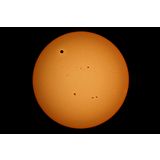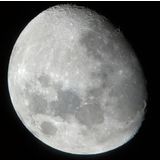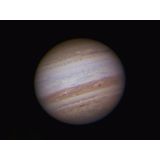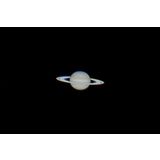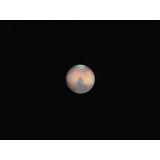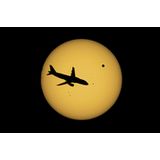
In honor of our 37th anniversary, we have compiled a list of 37 astronomy wonders:
- The Sun - Use a solar filter and look for sunspots.
- The Moon - A great site for beginning stargazing. Easy to find!
- The Perseid Meteor Shower - Happens every August, and you don’t need a telescope to enjoy this Celestial treat.
- Jupiter - The largest planet in our Solar System. You can see its four brightest moons with binoculars.
- Saturn - The disk and rings make for fantastic viewing.
- Mars - The red planet and still visible low in the southwest (Summer 2012).
- Venus - This cloud covered body goes through phases like the Moon and is our closest planetary neighbor.
- Mercury - You will need a clear view of the east or west horizon to find Mercury. Catch it in the early morning sky in August, 2012.
- Uranus - Uranus can be a challenge to find (you need a good star chart), but looks different enough from a star to make it distinguishable.
- Aurora - 2012 is a year of Solar Maximum, if you visit the northern US this summer you might catch these incredible displays caused by solar explosions - the sky looks like its on fire!
- The Milky Way - Easily the most spectacular sight visible to the unaided eye outside the solar System. Its easy to see with the naked eye when the moon is gone and you are away from city lights. Scan it with your binoculars or telescope to see details.
- The Pleiades - The seven sisters. Found above the constellation Taurus; as summer starts, the Pleiades are rising above the eastern horizon about dawn.
- The Orion Nebula - A winter favorite, spot the four stars that give this nebula its glow below Orion’s belt.
- The Double Cluster - NGC884 & NGC869 are two clusters in the Peruses constellation.
- Andromeda Galaxy - This galaxy is the furthest visible object in our night sky.
- Ring Nebula - M57 is a planetary nebula in the Lyra constellation.
- Albireo - One of the brightest double stars.
- Messier 13 - The Great Cluster in Hercules is a Globular Cluster with ten’s of thousands of stars
- Messier 67 - A vivid cluster of stars in the Cancer constellation.
- Dumbbell Nebula - M27 is another planetary nebula that so bright and large it’s easy to find in 10 power binoculars.
- M7 - A huge open star cluster; point your binoculars or wide field telescope a little north east of the "stinger" of Scorpio and you’ll nab it!
- Lagoon Nebula - M8 is in the constellation of Sagittarius and is one of the prettiest emission nebula in the night sky.
- Crab Nebula - M1 is a supernova remnant in Taurus that has a pulsar inside.
- Beehive Cluster - M44 is an open star cluster similar to the Double Cluster. It is in the constellation of Cancerand can be see with binoculars or wide field telescopes.
- Big Dipper - More specifically, the galaxies around the stars of the Big Dipper, including M81 and M82. There are dozens of fairly bright galaxies in this area; get a star chart!
- Eagle Nebula - M16 is best seen through telescopes when the moon is down. It is in the constellation Serpens.
- Swan Nebula - M17 is a glowing cloud of gas also known as the Omega nebula. It is in the Sagittarius constellation.
- Omega Centauri - NGC5139 is the largest known globular star cluster found low in the south in the constellation Centaurus.
- Trifid Nebula - M20 is in the Sagittarius constellation and is made up of smaller nebulas and clusters.
- Globular Star Cluster - M22, again in Sagittarius is one of the brightest clusters in the sky.
- Sirius - The brightest star in the night sky is in the constellation of Canis Major. It also is a binary star system.
- Whirlpool Galaxy - M51is a spiral galaxy in the constellation of Canes Venatici.
- M51b - This is a dwarf galaxy visible right next to the Whirlpool Galaxy.
- The Helix Nebula - NGC 7293, this exploded star is big enough to see with binoculars, but look for it from a dark sky site when the moon is absent.
- M83 - The Southern Pinwheel, is in Hydra and bright enough to see in astronomical binoculars.
- Lunar Eclipses - Check astronomy sites to find the next lunar eclipse visible in your area.
- Just Explore - A clear night sky is filled with an infinite number of astronomy wonders. Set up your telescope and explore from horizon to horizon.




